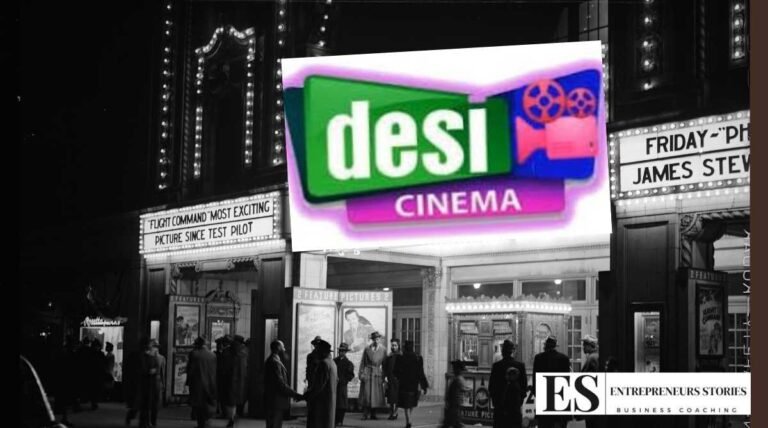South Asian cinema, often referred to as “desicinemas,” has grown into a global phenomenon, captivating audiences with its unique storytelling, vibrant visuals, and cultural richness. From the bustling streets of Mumbai to the serene landscapes of Sri Lanka, desicinemas offer a kaleidoscope of genres and styles that reflect the diverse cultures of the region. This article delves into the world of desicinemas, exploring its history, key characteristics, and its impact on global cinema.
The Origins and Evolution of Desicinemas
Desicinemas trace their roots back to the early 20th century when the first silent films were made in India. The journey began with Dadasaheb Phalke’s “Raja Harishchandra” in 1913, which is considered the first full-length Indian feature film. This marked the beginning of an era where storytelling through motion pictures became a powerful medium in South Asia.
The industry saw significant growth in the 1940s and 1950s, a period often referred to as the “Golden Age of Indian Cinema.” Filmmakers like Satyajit Ray, Raj Kapoor, and Guru Dutt produced classics that are still revered today. Ray’s “Pather Panchali” (1955), for example, garnered international acclaim and paved the way for Indian cinema on the global stage.
The Rise of Regional Cinemas
While Bollywood, based in Mumbai, is the most prominent face of Indian cinema, desicinemas encompass a wide array of regional film industries. Tamil, Telugu, Bengali, and Malayalam cinemas have their own distinct identities and have contributed significantly to the richness of South Asian cinema.
Tamil cinema, known for its robust storytelling and technical prowess, has produced globally recognized directors like Mani Ratnam and Shankar. Telugu cinema, often referred to as Tollywood, boasts of grandiose productions and has a massive following. Malayalam cinema, renowned for its realism and strong narratives, has given us auteurs like Adoor Gopalakrishnan and Shaji N. Karun. Bengali cinema, with its intellectual and artistic bent, continues to produce thought-provoking films that resonate with audiences worldwide.
The Influence of Desicinemas on Global Cinema
Desicinemas have had a profound impact on global cinema, influencing filmmakers and audiences alike. The vibrant song and dance sequences, intricate plots, and deep emotional undertones have found fans across the world. Bollywood’s influence can be seen in Hollywood films that incorporate similar elements, such as vibrant dance numbers and melodious music.
The crossover success of films like “Slumdog Millionaire” (2008), directed by Danny Boyle, highlighted the global appeal of Indian storytelling. Furthermore, filmmakers like Mira Nair and Gurinder Chadha have brought South Asian narratives to international audiences through their work.
The Cultural Significance of Desicinemas
Desicinemas are not just a form of entertainment; they are a reflection of South Asian society, culture, and values. They tackle a range of issues, from social injustices and family dynamics to love and identity. Films like “Lagaan” (2001) and “Dangal” (2016) explore themes of resilience and empowerment, while movies like “Queen” (2014) and “Zindagi Na Milegi Dobara” (2011) challenge traditional gender roles and societal expectations.
Moreover, desicinemas often serve as a mirror to the socio-political landscape of the region. For instance, the rise of films addressing LGBTQ+ issues, such as “Ek Ladki Ko Dekha Toh Aisa Laga” (2019), signifies a progressive shift in societal attitudes.
The Role of Music in Desicinemas
Music plays an integral role in desicinemas, often driving the narrative forward and adding depth to the storytelling. Bollywood music, in particular, has a massive following, with soundtracks often becoming more popular than the films themselves. Composers like A.R. Rahman, with his Oscar-winning score for “Slumdog Millionaire,” and classic composers like R.D. Burman and Lata Mangeshkar have left an indelible mark on the industry.
The integration of music in desicinemas goes beyond just entertainment; it is a cultural expression that resonates with audiences, invoking emotions and creating memorable cinematic moments. The song and dance sequences, often elaborate and colorful, are a distinctive feature that sets desicinemas apart from other film industries.
The Future of Desicinemas
The future of desicinemas looks promising, with advancements in technology and the rise of digital platforms expanding their reach. Streaming services like Netflix, Amazon Prime, and Hotstar have made South Asian films more accessible to global audiences. This digital revolution is not only helping preserve classic films but also providing a platform for new and innovative storytelling.
Furthermore, there is a growing trend of collaboration between South Asian and international filmmakers, leading to a fusion of styles and narratives that appeal to a broader audience. The success of co-productions like “The Lunchbox” (2013) and “Lion” (2016) is a testament to this trend.
Challenges Facing Desicinemas
Despite its successes, desicinemas face several challenges. Piracy remains a significant issue, affecting the industry’s revenue and growth. Additionally, there is a need for better infrastructure and support for regional cinemas, which often do not receive the same attention and resources as Bollywood.
Moreover, the industry must continue to evolve in terms of representation and inclusivity. While there have been strides in showcasing diverse stories and characters, there is still a long way to go in terms of gender equality and representation of marginalized communities.
Conclusion
Desicinemas are a vibrant and essential part of global cinema, offering a unique blend of storytelling, music, and cultural expression. From their early beginnings to their current global influence, they continue to captivate audiences with their rich narratives and artistic excellence. As the industry evolves and embraces new technologies and collaborations, desicinemas are poised to reach even greater heights, contributing to the rich tapestry of world cinema.

